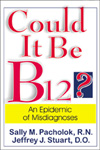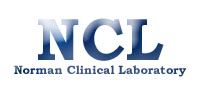Reduced Medical Expenses
Health care cost for Americans over age 65 was nearly $300 billion
in 1992.57 The medical cost for this age group is expected to significantly
increase with the population of this group growing from 30 to 65 million in
the next 40 years.58
Dementia from B12 deficiency is identical to that of early stage
AD.14 In 1994, total cost for care of one AD patient was more than $213,000
in additional to other medical expenses.59 The total yearly cost for caring
for an AD patient, whether living at home or a nursing facility was estimated
at $47,000 in 1993.60 In 1990, over 10% (3.75 million) of the US population
over age 65 had AD and 9 million cases are projected by 2040.61 AD has been
estimated to cost the U.S. approximately 90 billion dollars a year, which includes
care as well as loss of productivity for patient and caregiver.60-2
A recent study following 370 individuals aged 75 or older for
three years found subjects with low levels of serum B12 or folate had twice
the risk of developing AD. Subjects with good cognition were especially at risk
suggesting damage is done during the earliest prodromal phase of AD.63 These
data suggest that delaying uMMA screening until a patient is symptomatic may
be too late to completely reverse cognitive loss with B12 therapy.
A similar study of 1092 subjects, mean age 75, were followed for
eight years and dementia developed in 111, including 83 with AD.64 An increased
plasma Hcys level, characteristic of folate or vitamin B12 deficiency, was found
to be a strong , independent risk factor for the development of dementia and
AD. Their data indicate that Hcys levels were elevated well before the onset
of dementia and suggest as the previous study63 the need for routine uMMA screening.
The risk of AD nearly doubled with Hcys levels above 14 micromoles per liter
and also causes a similar increased risk of death from cardiovascular causes
and strokes. The levels of Hcys were even greater for non anemic individuals
with mild vitamin B12 deficiency14 and gives further support for uMMA screening.
For example, 16 subjects, mean age 81, identified with high uMMA levels of 7.8
+-5.1 had Hcys levels of 18.6 +- 8.6 micromoles per liter.14
Similarly, vegetarians were shown to have elevated Hcys levels
of 11.2 micromole/liter attributed to B12 deficiency compared with a value of
8.64 for non vegetarian women.65,66 A high Hcys level is associated with risk
of heart disease. Meta -analysis of several studies indicate that a Hcys level
of 15 micromole/liter results in a 60 to 80% greater risk of cardiovascular
disease then volunteers with a more typical concentration of 10 micromoles/
liter.65,66
uMMA screening which prevented one person from development of
AD or B12 deficiency dementia would save $200,000 for 4000 more screening tests
at $50 each. Additional screening of elderly populations, with a prevalence
of 5 -15 %, could identified hundreds for early B12 treatment and prevention
of dementia as well as other neurologic symptoms and cardiovascular disease.
The findings that asymtomatic individuals with mild vitamin B12 deficiency are
at risk for developing both AD as well as cardiovascular disease warrants annual
screening of senior populations. The uMMA test is the only practical screening
test available.
| 
